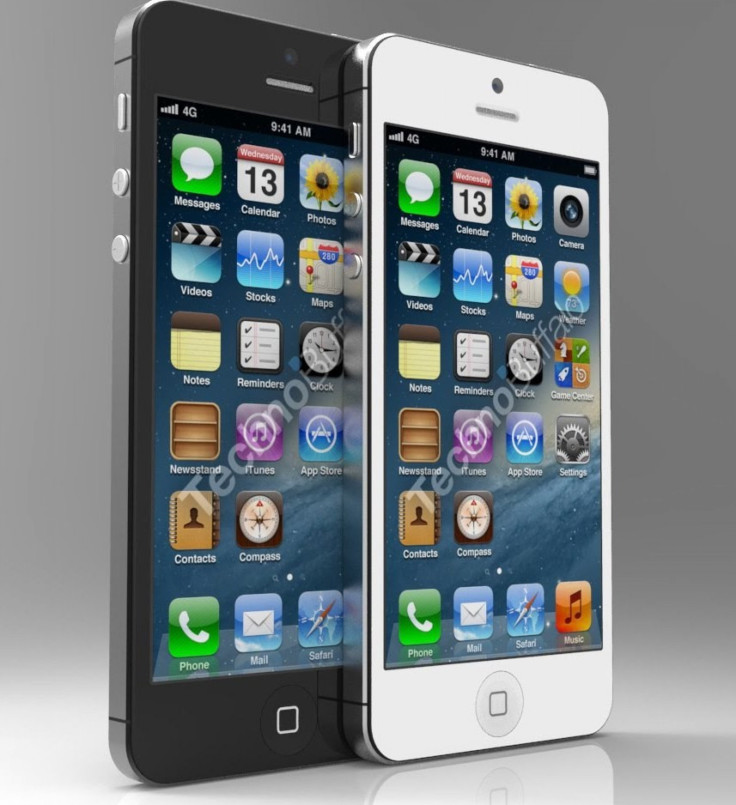Apple iPhone 5 Not In Production Yet, Source Says; Release Date Still Rumored For Fall 2012

Recently several reports have surfaced indicating that Apple's next generation iPhone 5 is already in production. However, according to BGR, this may have been just another bit of faulty hearsay in the ever-churning iPhone 5 rumor mill.
A source has told the technology news source that this isn't true, since Apple goes through numerous stages before a product is manufactured. Two of these steps include the engineering verification test and the design verification test. The alleged iPhone 5, which is actually the sixth generation of the Cupertino, Calif.-based company's smartphone, is currently in the EVT3 stage, BGR reports.
This means that the device is undergoing the third phase of the engineering test stage and has not entered the design verification test yet. Without completing these two tests, the phone cannot officially be in production.
The current-generation iPhone 4 Verizon variant hit the EVT3 stage in the last week of November and reached DVT2 in late December. The prototype of the iPhone 4 that famously surfaced in a San Francisco bar in 2010 was in the DVT stage in late March, and was previously in EVT2 by the middle of February that year.
BGR speculates that Apple could have produced samples units of its next iPhone to act as a test run before actual production kicks into gear.
It's certainly possible that Apple is producing engineering samples of new iPhones and has started manufacturing device enclosures to iron out any problems with the manufacturing line before real production starts, but that's all that is happening at this point in time, writes Jonathan S. Geller of the publication.
Production of the version that users will be able to purchase in stores has not started yet, according to BGR. The website has also received confirmation from a source concerning some of the new product's hardware specs. The units that Apple is currently testing feature 1 GB of RAM, which is double the memory of the iPhone 4S which has 512MB. Integrated LTE radios and Near Field Communication (NFC) hardware are also included in the models Apple is testing.
A recent rumor that sparked from KnowYourMobile, who claimed to have a source in Asia, revealed an August 7 release date. However, BGR expects the next-generation iPhone to launch at the end of September or early October. This would be a full year after the iPhone 4S was released, and does line up with some rumors that have circulated over the past couple of months. The source from KnowYourMobile also indicated that a keynote speech will announce the new phone. An August announcement could make sense with a fall release date, but until Apple confirms this information it can only be considered rumor.
This also coincides with the roll out of Apple's next operating system, iOS 6, which is likely to debut at the same time as the new iPhone. As MotoringCrunch acknowledges, previous iPhone models have also been accompanied by operating system overhauls.
An e-commerce website in China has already begun accepting pre-orders for the iPhone 5, with a product page featuring tech specs and mock-up images. As previously stated, features and hardware specs have yet to be confirmed by Apple, but here's a list of what Apple fans are hoping to see in the next-gen device, courtesy of Computer World:
- A 4-inch display
- An improved quad-core processor, likely manufactured using 32nm process tech
- Improved graphics and a better camera
- A new Dock connection, likely to be Thunderbolt or mini-USB
- Tougher glass
- A thinner chassis
- International support for those 4G/LTE networks which exist
- Much-improved iCloud integration
- iOS 6: Many improvements in Siri
- iOS 6: Apple Maps
- iOS 6: Passbook, potentially though not necessarily featuring NFC payment support
- iOS 6: Facebook and Twitter integration
The Wall Street Journal also recently reported that the iPhone 5 will have a thinner screen than its predecessors, and will incorporate technology that includes touch screen in the LCD screen. This makes the separate touch-screen layer unnecessary.
© Copyright IBTimes 2024. All rights reserved.






















